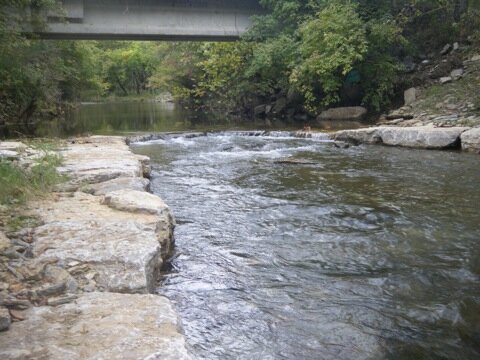mill creek
The project encompasses 2,385 feet of Mill Creek near Nolensville in Williamson County, Tennessee. The existing channel was highly degraded due to channelization, vegetation removal, infrastructure including roadway fills and has been listed on the 303(d) list due to impacts from unrestricted livestock access. The degradation of this reach was of particular concern as it provides habitat for the Nashville Crayfish (Orconectes shoupi), a federally listed endangered species. The primary goals of this restoration project were to improve water quality, restore channel stability, enhance aquatic habitat and restore riparian buffer function. These goals will be accomplished by the elimination of non-point source pollutants such as sedimentation and nutrient loadings by excluding livestock from the channel and riparian corridor; elimination of accelerated bank erosion problems; reestablishing in-stream habitat by restoring bed form diversity in the form of riffles and pools; and enhancement of the riparian zone by planting native trees, shrubs, live stakes and herbaceous species. Re-grading and planting of unstable banks and the surrounding floodplain will reduce erosion and improve water quality. The restored riparian buffer will decrease stream temperatures and provide habitat for terrestrial animals. The floodplain basins will help improve water quality, decrease peak flows in Mill Creek and provide valuable floodplain habitat.
Service Area: West Lower Cumberland
Watershed: Cheatham Reservoir
Project Length: 2,385 linear feet
Date of Completion: August 2009






